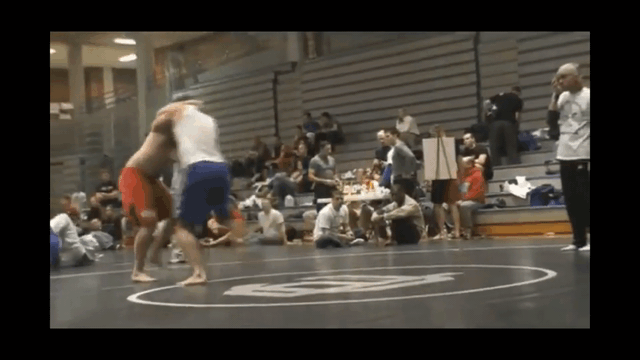In BJJ, is it true that the person who has legs wraps around the other's waist will have advantage no matter he is on top or on the bottom?
Just to clarify some terms before I start ...
Full guard is the position where the person on bottom has their legs wrapped around the waist of the person on top.
The inverse of full guard is mount, where the person on top is sitting on the waist or chest of the person on bottom. For mount, the top person generally does not want their legs wrapped all the way around the waist of the person on bottom, as this would both be uncomfortable and also limit their own ability to move.
In a real fight, where strikes and slams are allowed, the person on top of closed guard has an advantage, but not an overwhelming one. In a typical* sport BJJ tournament where strikes and slams are not allowed, then the person on bottom of closed guard has an advantage, but not an overwhelming one.
In either a real fight or a sport grappling match, top of mount is significantly dominant over the bottom.
So in a real fight
Top of mount >>>>>top of closed guard>>bottom of closed guard >>>>>bottom of mount
In typical BJJ tournament:
Top of mount >>>>>bottom of closed guard>>top of closed guard >>>>>bottom of mount
*(I say typical because there are multiple BJJ competition rulesets and occasionally you find a tournament that allows slams or limited striking.)
If the "jump guard" counter "body slam" is too risky, why not make the "jump guard" illegal move instead of making the "body slam" illegal move?
Traditionally BJJ tournaments allowed jumping guard but not the body slam because it showcased the techniques that were most uniquely emblematic of BJJ - playing from guard. However this was never without controversy in the BJJ community. Some people have pointed out, as you did, that slamming someone who jumps guard on you is the natural correct counter in a fight. Some people point out that injuries also can happen from competitors jumping guard incorrectly. Some people feel that jumping guard (or pulling guard, which is different) makes it too easy for practitioners to learn proper takedown skills.
There are a number of solutions which have been tried. A few tournaments allow slams. Some ban jumping guard (or at least ban it for lower belt levels). Some penalize the guard puller pointwise. At this time, most BJJ tournaments still ban slams and allow jumping guard without penalty, but this may change in the future.
BTW, I generally don't teach my students to jump guard. I want them to have a skillset that will transfer as seamlessly as possible between self-defense, MMA, and various sport grappling rulesets. I don't want them to develop habits that might give them a marginal advantage in one particular competition ruleset but that will get them killed in a real fight.

